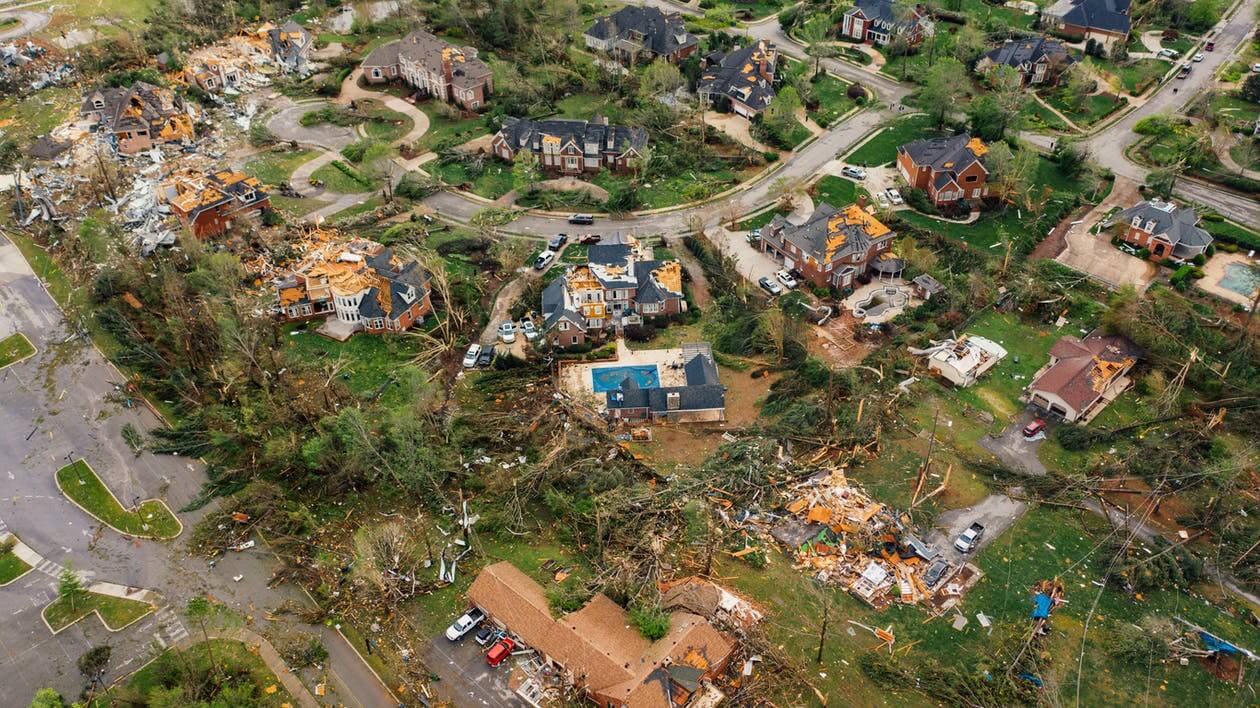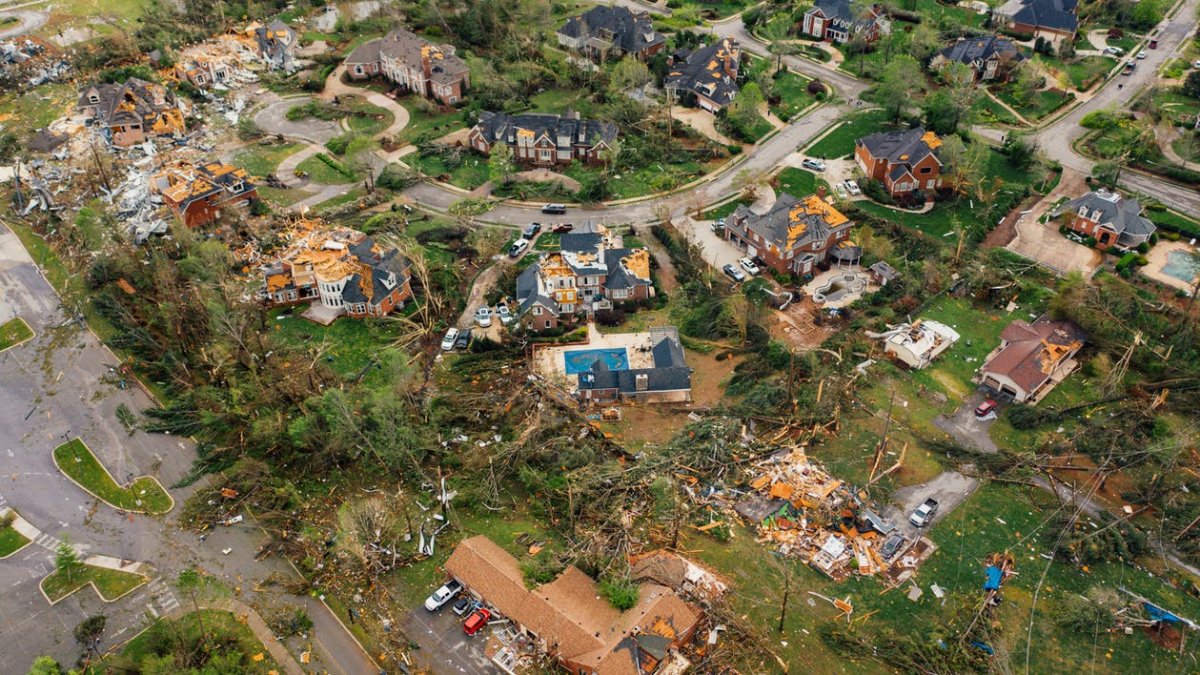
Thanks to the spontaneity of our ever-changing weather, homeowners fall victim to terrible tornados and torrential thunderstorms now and then. As such, these storms and tornados can cause an immense amount of damage to your home. In addition, powerful winds and heavy rains that usually accompany a thunderstorm or tornado can result in roof damage, flooding, and downed trees on your property.
Sometimes, post-storm damage can lead to health and safety concerns as well. So, knowing what you should do after a storm obliterates your home will make a huge difference in what happens next.
It can impact everything from your vehicles, floors to your furniture – not to mention your insurance claims. That said, what you do afterward will have a significant effect on your belongings, family, and, most importantly, your finances.
As challenging as post-storm recovery is, you can bet you aren’t the only one who’s gone through a similar situation. Such a thing makes finding a solution to your woes a little easier. However, rather than worry about post-storm damage, think of it as an opportunity to remodel your home to make it look as good as new.
That said, let us take a look at some of the steps you can take to restore your home after a storm damages it.
1. Have a restoration plan in place.
While you could take a DIY approach to restore the food items under the Big Basket referral program, restoring your home to its original state, how effective will you be if you decide to do it yourself? You probably won’t have the experience or the knowledge of a construction professional or a general contractor. Rebuilding after a flood or storm takes time, effort and requires tons of experience in the restoration business. It will be challenging and complicated for you to restore your home yourself, so it’s better to consult a professional first.
Next, conjure up a restoration plan. Try finding the best possible home restoration experts in your area and talk to them about rebuilding after a flood or a storm. Talk to them about what you’re expecting because it would help save tons of money.
What’s more, these professionals are experts in the art of home restoration. If larger systems or items in your home need to be repaired, your home warranty company may be able to help recommend a reliable vendor to contact.
2. Check your home for damage.
Severe flooding and storms can lead to damaged roofs, broken glass, torn trees, and other hazards. The first thing after developing a restoration plan is to identify any safety hazards. It’s natural to inspect your property for damage. Firstly, ensure there is no threat of electrocution, which is possible if there are downed powered lines nearby.
Secondly, if your home has an unstable roof, refrain from entering until the professionals inspect it. Lastly, you would want to watch out for broken glass, sharp debris, nails, screws, etc. Include your finding in your restoration plan to tackle with them!
3. Document damage for insurance purposes.
Once you’ve secured your property, it is now time to assess the damage that occurred. It can be an emotional process seeing your belongings falling victim to the wrath of a storm or flood. However, this is a necessary step when filing for a home insurance claim.
Ensure you’re as thorough and accurate as possible when documenting damages. For example, take photographs of your home from the outside and the inside. And ensure that every photo shows the damage clearly. For instance, if damage occurred to major appliances and furniture, take pictures of the damage and ensure that these photos clearly show the manufactures identity.
It will help with the determination of replacement value when you file a claim. Although you might find the documentation process a huge hassle, especially right after you’ve experienced a storm or a flood, damage documentation is vital if you want to recoup your losses.
4. Restore your rooms one by one.
Which room is more important; your game room or your kitchen? If your home experiences storm or flood damage, you would want to restore your kitchen first and move on to your game room at a later time. While you might miss playing your favorite games inside your game room, ask yourself, is it more important than your kitchen? It probably isn’t.
Once you’ve finished restoring your home’s essential rooms like the kitchen, living room, bedrooms, and bathroom mirrors, you should then move on to the extra rooms such as your in-home movie theater, at-home gym, game room, man cave, etc.
5. Contact your insurance company.
After assessing your losses, the next step to take is contacting your home insurance company. The sooner you get in touch with them, the better it will be for you when you’re trying to claim damages. Not contacting your insurance company immediately will only make the insurance claim process longer. However, the amount of coverage depends on your insurance policy type.
It is a wise decision to have your insurance company’s information on your smartphone. Doing so will ensure you can get in touch with them if your insurance claim papers get damaged during a storm or a flood.
It is also vital that you’re present on your property when the insurance officer inspects the damage sustained by your house. It will allow you to walk them through the damages so he/ she can provide you with a proper claim amount.
Furthermore, provide any receipts associated with the storm damages, including hotel receipts, etc.
6. Hire restoration services.
The last thing to do post-storm is to find and hire a professional house restoration company. It will allow you to tackle all the storm damage and bring your home back to its original state. That said, look for a restoration company that has a solid reputation. Also, ensure that they have extensive experience handling damage that occurred to your property.
If other neighboring properties suffered from damage as well, be wary of scams. Fraudulent restoration companies prey on storm victims and overcharge for low-quality services. Instead, take some time and ensure you hire someone who can repair your home from top to bottom.
Moreover, also ask for any referrals from friends and family who’ve experienced a similar situation as yours.
Conclusion
Whether it is your business or your home, your property is your haven. After a severe storm or a flood consumes your property, you must remain calm and take the steps mentioned in this article to recover as soon as possible.
First, assess the situation and ensure that you hire the best possible restoration services you can afford. Doing such a thing will allow your home or property to return to its pre-damage condition immediately.
Henrik Langley
Related posts
Stay connected
Today's pick
- The Importance of Professional Handyman Services for Your HomeYour home is your sanctuary, a place of comfort and security, but maintaining it can be a daunting task. From routine maintenance to unexpected repairs, there’s always something that needs attention. While many homeowners might be tempted to tackle these jobs themselves, not all tasks... The post The Importance of Professional Handyman Services for Your […]

